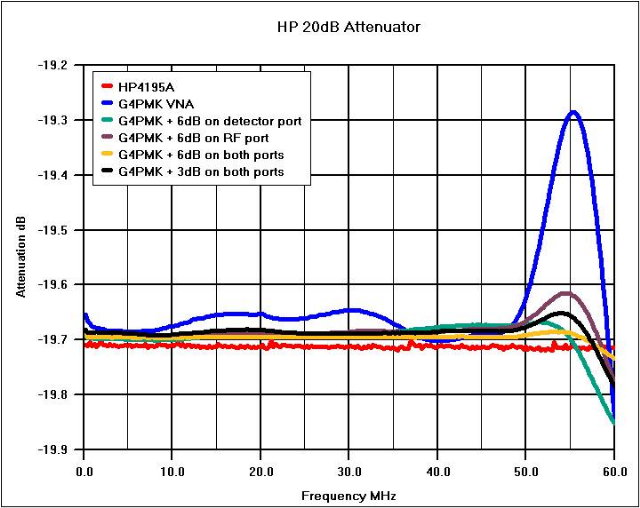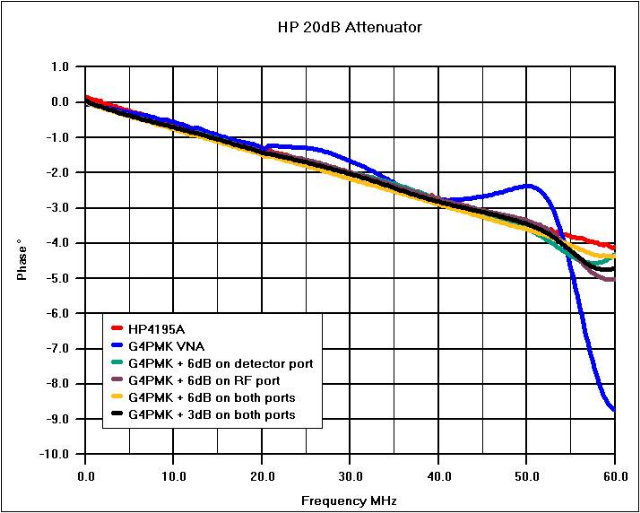The common Device Under Test (DUT) was a HP 8491A 20 dB attenuator with N connectors (S/N 400049). The DUT was swept from 0.25 to 60 MHz in 0.25 MHz steps.The plots below show the DUT attenuation in dB and phase in degrees vs. frequency using various test configurations of the N2PK VNA. Some of the test configurations use attenuators (also called 'pads') on one or both sides of the DUT. Pads are conventionally used to correct for deviations from 50 ohms presented to the DUT by RF test equipment used to make the measurements.
The insertion loss and phase of these pads are both accounted for in the VNA calibration and, hence, are not part of the DUT.


The correlation to the HP VNA of the N2PK VNA without pads is less than 0.1 dB and 1 degree from 0.25 to 50 MHz. Adding a six dB pad on each side of the DUT improves this correlation to better than 0.025 dB and 0.20 deg.
The correlation degrades somewhat through 60 MHz for the unpadded N2PK VNA, largely the result of poorer source match in the RF DDS anti-alias filter above 50 MHz.
However, the addition of the 6 dB pads provide less than 0.034 dB and 0.35 degree differences from the commercial VNA through 60 MHz.
The "RF DDS Buffer" and the "Detector RF Pre-amplifier" can also be used, in place of the pads, to improve the source match and load match respectively without loss of dynamic range as is incurred by the pads. These additional components are described in Part 2 of the VNA documentation that follows.
The "Detector RF Pre-amplifier" has 21 dB gain and is normally used to extend the dynamic range of the N2PK VNA. However, the addition of a 20 dB pad in front of it makes for a net +1 dB gain block which is essentially dynamic range neutral while further improving load match.
A better option, that appears to greatly improve accuracy through 60 MHz, is to use a 30 dB pad on the RF DDS side of the DUT. The "RF DDS Buffer" is not used and the "Detector RF Pre-amplifier" follows the DUT.
While this results in a 9 dB loss in dynamic range, the reduced input signal to this pre-amp during through calibration makes gain compression in the pre-amp essentially negligible while improving both source and load match over the bare VNA.
The use of any pads presumes that they also have good return loss, preferably exceeding 30 dB.
It is hoped that the addition of the second detector to the N2PK VNA, as previewed elsewhere on this website, when coupled with 12-term error correction will further improve these correlations without resorting to pads, buffers, or pre-amps.
Back